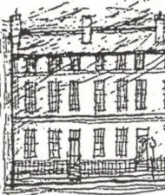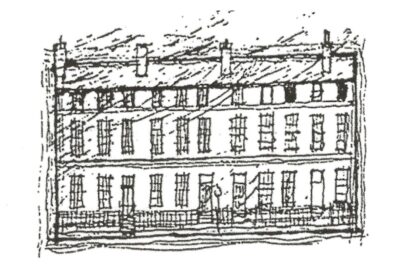Having attended the NTBCC meeting on 8th March, in which there was an hours discussion about the proposals. Various questions and points were discussed [See NTBCC – Summary of meeting]
I have copied a few questions and answers from the meeting about traffic below:
Q. How will the risk of vehicle and parking congestion in the New Town streets near George Street be managed?
A. As we move towards a largely car free city centre we anticipate overall vehicle numbers to reduce. Consideration to restrictions will be given to side streets if and as required.
Q. What account has been taken about the redirection of extra traffic (if any) to Queen St, Abercromby Place and Northumberland Street?
A. Yet to be determined as part of City Mobility Plan process. Overall reform to bus services to better align with future expanded trams.
A. Queen St, Abercromby Place and Northumberland Street? Traffic generally only in George Street due to parking provision.
Summary Answer – George Street doesn’t provide a strategic traffic route. With parking removed combined with low car city centre very limited traffic transfer is forecast.
The presentation team were heavily grilled by attendees, given the wide ranging proposals. In general the proposals were welcomed, although with concerns about the “life” of George Street and some of the travel implications were discussed at length. It is proposed to remove the bus routes going down George Street, relying on the north/south routes providing the access via Hanover and Frederick Street. In future traffic will still be able to use the north/south routes to access other parts of the city, with speeds restricted by pedestrian crossings and street architecture.
The project team seemed to be limited in the scope of impact by other Edinburgh Council projects, both the City Centre Transformation and City Mobility Plan. Which in turn are derived from the Scottish Government’s National Transport Strategy. click here
The other proposal are shown on the tabs below, feel free to review the proposals and feedback your thoughts.
Summary of proposals:-
In 1998, Jan Gehl Architects produced a major report called “Public Space Public Life” for the City of Edinburgh Council. This ground-breaking piece of work advocated prioritising pedestrians and investing in the city centre. The work was revisited and refreshed in 2010 when recommendations were also made to trial changes.
In March 2013, the Council’s Transport & Environment Committee agreed to commence proposals to improve pedestrian space in the city centre and the consequential changes required to vehicle and public transport movements. During 2014 and 2015, the Council trialled new layout and operating arrangements on George Street. Independently run surveys were conducted throughout the trial period, and evidenced strong public appetite for change.
This led to initial design principles being developed for George Street with the input of stakeholders and the public. These were approved by the Council in 2016.
In October 2017, it was agreed to widen the George Street study area to include Castle, Frederick, Hanover Streets and the junctions with Charlotte and St Andrew Squares, to recognised the operational interrelationship between the First New Town streets, and the need to address critical design interdependencies with other projects in the surrounding city centre.
From December 2017 to January 2019, the Council led an iterative process with stakeholders and the public to agree the design objectives for George Street and First New Town and produce a concept design.
This process resulted in a report to the Transport & Environment Committee in May 2019 which summarised the outcomes of consultation and sought approval of a draft concept design which included wider pavements, removal of central parking bays, introduction of landscaped seating areas, and a two-way cycle way along the south side of the street.
Across the world, cities like Edinburgh are changing rapidly and taking on the challenges of
- climate change
- poverty
- exclusion
- inequality
- improving safety, health and wellbeing.
These issues are highly influenced by the way we travel around, to and from the city, and how we deliver goods and services to the places where people need them.
We’ve made significant progress in the last few years, but more of the same is not an option. Now is the time for bolder, more transformational action and Edinburgh has an ambitious agenda for change.
As well as setting a target to be net zero carbon by 2030, we’ve also committed to the eradication of poverty and becoming data capital of Europe.


Lots of policies here.